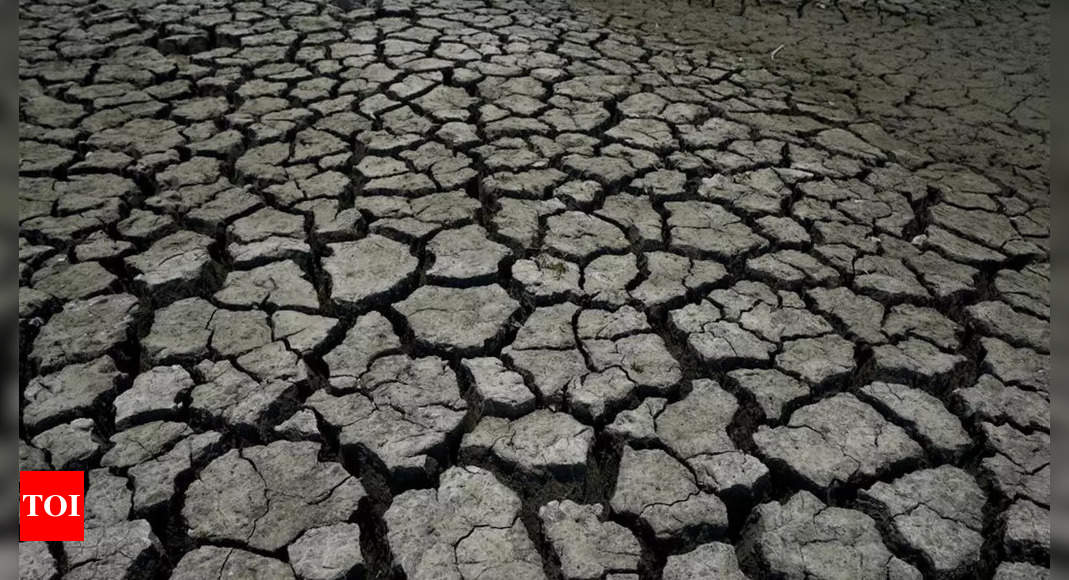Local weather hazards equivalent to flooding, warmth waves and drought have worsened greater than half of the a whole lot of identified infectious illnesses in individuals, together with malaria, hantavirus, cholera and anthrax, a examine says.
Researchers seemed by means of the medical literature of established instances of sicknesses and located that 218 out of the identified 375 human infectious illnesses, or 58%, gave the impression to be made worse by one in all 10 sorts of excessive climate related to local weather change, in keeping with a examine in Monday’s journal Nature Local weather Change.
The examine mapped out 1,006 pathways from the local weather hazards to sick individuals.
In some instances, downpours and flooding sicken individuals by means of disease-carrying mosquitos, rats and deer.
There are warming oceans and warmth waves that taint seafood and different issues we eat and droughts that convey bats carrying viral infections to individuals.
Docs, going again to Hippocrates, have lengthy related illness to climate, however this examine exhibits how widespread the affect of local weather is on human well being.
“If local weather is altering, the danger of those illnesses are altering,” mentioned examine co-author Dr.
Jonathan Patz, director of the International Well being Institute on the College of Wisconsin-Madison.
Docs, equivalent to Patz, mentioned they want to consider the illnesses as signs of a sick Earth.
“The findings of this examine are terrifying and illustrate properly the big penalties of local weather change on human pathogens,” mentioned Dr.
Carlos del Rio, an Emory College infectious illness specialist, who was not a part of the examine.
“These of us in infectious illnesses and microbiology have to make local weather change one in all our priorities, and we have to all work collectively to forestall what might be doubtless a disaster on account of local weather change.” Along with infectious illnesses, the researchers expanded their search to take a look at all kind of human sicknesses, together with non-infectious sicknesses equivalent to bronchial asthma, allergic reactions and even animal bites to see what number of maladies they may connect with local weather hazards indirectly, together with infectious illnesses.
They discovered a complete of 286 distinctive sicknesses and of these 223 of them gave the impression to be worsened by local weather hazards, 9 had been diminished by local weather hazards and 54 had instances of each aggravated and minimized, the examine discovered.
The brand new examine does not do the calculations to attribute particular illness modifications, odds or magnitude to local weather change, however finds instances the place excessive climate was a probable issue amongst many.
Research lead writer Camilo Mora, a local weather information analyst on the College of Hawaii, mentioned what’s necessary to notice is that the examine is not about predicting future instances.
“There isn’t a hypothesis right here in any respect,” Mora mentioned.
“These are issues which have already occurred.” One instance Mora is aware of firsthand.
About 5 years in the past, Mora’s dwelling in rural Colombia was flooded – for the primary time in his reminiscence water was in his lounge, creating a really perfect breeding floor for mosquitoes – and Mora contracted Chikungunya, a nasty virus unfold by mosquito bites.
And although he survived, he nonetheless feels joint ache years later.
Generally local weather change acts in odd methods.
Mora consists of the 2016 case in Siberia when a decades-old reindeer carcass, lifeless from anthrax, was unearthed when the permafrost thawed from warming.
A baby touched it, received anthrax and began an outbreak.
Mora initially wished to go looking medical instances to see how COVID-19 intersected with local weather hazards, if in any respect.
He discovered instances the place excessive climate each exacerbated and diminished possibilities of COVID-19.
In some instances, excessive warmth in poor areas had individuals congregate collectively to chill off and get uncovered to the illness, however in different conditions, heavy downpours diminished COVID unfold as a result of individuals stayed dwelling and indoors, away from others.
Longtime local weather and public well being skilled Kristie Ebi on the College of Washington cautioned that she had considerations with how the conclusions had been drawn and a few of the strategies within the examine.
It’s a longtime proven fact that the burning of coal, oil and pure gasoline has led to extra frequent and intense excessive climate, and analysis has proven that climate patterns are related to many well being points, she mentioned.
“Nonetheless, correlation isn’t causation,” Ebi mentioned in an electronic mail.
“The authors didn’t focus on the extent to which the local weather hazards reviewed modified over the time interval of the examine and the extent to which any modifications have been attributed to local weather change.” However Dr.
Aaron Bernstein, interim director of the Middle for Local weather, Well being, and the International Setting at Harvard College of Public Well being, Emory’s del Rio and three different outdoors specialists mentioned the examine is an efficient warning about local weather and well being for now and the long run.
Particularly as world warming and habitat loss push animals and their illnesses nearer to people, Bernstein mentioned.
“This examine underscores how local weather change could load the cube to favor unwelcome infectious surprises,” Bernstein mentioned in an electronic mail.
“However after all it solely reviews on what we already know and what’s but unknown about pathogens could also be but extra compelling about how stopping additional local weather change could forestall future disasters like COVID-19.” .



Comment here